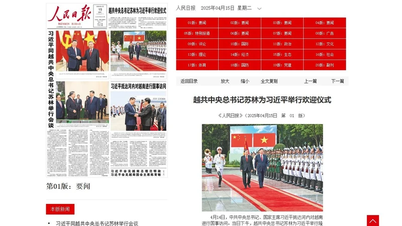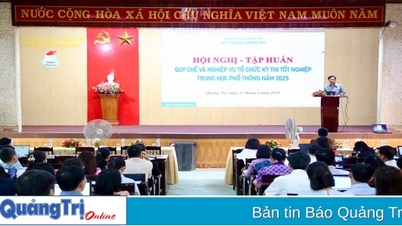(CLO) Although most people do not pay for news, with subscription rates reaching just 17% in more than 20 countries over the past three years, Argentina stands out as a special case with two publications attracting hundreds of thousands of paid subscribers despite the country's economic downturn.
Argentina's poverty rate jumped to 52.9% in the first half of 2024, up from 40.1% a year earlier, according to a report by the state statistics agency INDEC in late September 2024. In addition, inflation is skyrocketing in Argentina. But against this backdrop, Argentine newspapers are still able to attract a large audience willing to pay for their news.
Specifically, Clarín recently announced that it has more than 700,000 paying subscribers, while its rival La Nación has 375,000. So how do these newspapers successfully convince readers to pay for news?

Readers of the Clarín newspaper in Buenos Aires, Argentina. Photo: Reuters
Flexible and smart paywall strategy
Publishers use different models when it comes to controlling access to digital publications. La Nación uses a flexible paywall model, where readers can access some articles for free before they have to subscribe. The system also analyzes reader behavior to deliver relevant content, prompting them to subscribe sooner.
“If readers are interested in political or economic articles, we will make the paywall appear earlier,” said Agustina Roncaglione, director of digital subscription acquisition at La Nación. That is, the algorithm will analyze which readers are actually interested in reading their news to charge.
Clarín follows a similar model, allowing users to read some articles for free before requiring a paid subscription. Javier Kraviez, Clarín’s chief digital officer, said they have experimented with different models and now employ a flexible strategy to attract readers.
Exclusive content for subscribers
Both Clarín and La Nación offer exclusive content to subscribers, an important factor in encouraging paying users. La Nación works with its newsroom to develop special events and newsletters exclusively for subscribers, while Clarín also offers special articles and features for members only.
Leo Leone, Head of Customer Experience at La Nación, shares that they create live events and special newsletters to connect readers with reporters and journalists.
Additional benefits
In addition to access to news, these newspapers also offer benefits to their subscribers. Clarín offers discounts on a variety of products and services, while La Nación offers discounts on supermarkets, restaurants, and movie theaters. This helps subscribers feel like they are getting more value for their money.
Continuous testing
Both Clarín and La Nación are constantly testing different strategies to attract new subscribers. Kraviez said testing is a key part of the process, and they continually evaluate the effectiveness of each tactic. They also adjust their channels and content to match the needs of their readers.
Quality journalism remains a top priority
Despite attractive promotions and offers, both La Nación and Clarín emphasize that the quality of journalism is the most important factor in attracting readers. Clarín is committed to providing accurate and reliable information, while La Nación focuses on informational value and quality of content, despite economic difficulties.
Despite high inflation and deep political polarization, both newspapers have remained steadfast in their mission. “The ethical mission of the media is incredibly important, especially in a time of rampant misinformation,” Kraviez stressed.
With this consistency, Clarín and La Nación have proven that quality journalism and the right strategy can help them attract hundreds of thousands of subscribers in a challenging market like Argentina.
Ngoc Anh (according to Reuters Institute)
Source: https://www.congluan.vn/cach-nhung-to-bao-argentina-van-thu-hut-duoc-nguoi-dang-ky-trong-boi-canh-lam-phat-post323308.html


![[Photo] Nearly 3,000 students moved by stories about soldiers](https://vphoto.vietnam.vn/thumb/1200x675/vietnam/resource/IMAGE/2025/5/17/21da57c8241e42438b423eaa37215e0e)




































































































Comment (0)